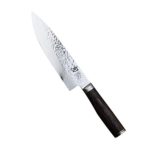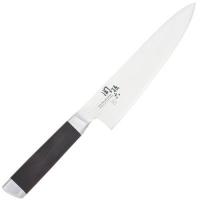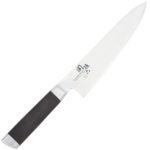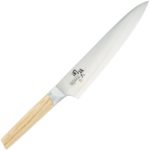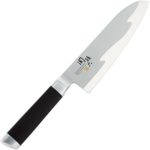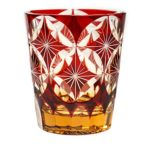Table of Contents
Choosing Japanese chef knives
The history of Japanese chef knife(hocho) is very long, it was born from Japanese sword. The kitchen knives of the brand name are forged by the smith craft workers who inherited the Japanese sword manufacturing technology.
Sponsored Links
Hocho has some materials, kinds and famous brands, so I would like to introduce them.
Materials
There are three basic types.
- stainless steel
- steel
- ceramic
Stainless steel

A metal containing iron as a main component (more than 50%) and containing 10.5% or more of chromium.
It is a kitchen knife that is resistant to rusting literally, with the coating of chromium, molybdenum or vanadium. And it’s easy to handle even for ordinary families.
The stainless chef knife can be sharpened even if its sharpness falls, but it will not take sharpness immediately and take time.
Steel
The professional chefs use this knife. It tends to have more rust than stainless steel, so it takes a lot of trouble to manage.
Though the steel hocho is the shaper and easier to grind than stainless steel. I wouldn’t recomend it you don’t really like.
Damascus steel
The knife of damascus steel is hard to rust and sharp. But the stainless knife more hardly get rust. Especially, the damasucus steel knife is strong and durable.
Ceramic
The chef knife developed by Japanese porcelain maker, Kyocera. Ceramic is not metal, so you can not whet it. But it keeps sharpness for a long time.
It is also able to be washed with bleaching.
However, the ceramic kitchen knife can not be restored once it gets dull and may break.
Types
Basically, there is no problem with general cooking if there is a Santoku-bocho (all-purpose kitchen knife) but you can cook more comfortably when you select a kitchen knife according to the application.
- Santoku-bocho (all-purpose kitchen knife)
- Nakiri-bocho (vegetable knife)
- Deba-bocho (pointed carver)
- Sashimi-bocho (sashimi knife)
- Gyuto (Western style knife)
Of course, the higher price of the chef knife is the sharper and more durable.
Santoku-bocho
Recommended size:17-20cm (6.7-7.9inch)
If you have a Santoku chef knife, you can cut most ingredients, meat, fish, vegetables.
In addition to just lowering the knife directly from the top to the bottom, it is better to cut the ingredients smoother you slide it along the curve of the blade or use the root of the blade when cutting a hard one.
However, it will be hard to clean a fish, cut hard vegetables and do fine work. Let’s buy other Japanese chef knives according to the application if necessary.
Selects ot stainless Santoku-bocho(price, low to high)
Selects of teel Santoku-bocho (price, low to high)
When it has a sharper tip, a gyuto (Western style knife) is easier to cut the big meet, fish or vegitable.
Nakiri-bocho
Recommended size:15-17cm (5.9-6.7 inch)
Nakiri-bocho has no curve, so even beginners feel easy to handle. Originally Japanese housewife used this knife mainly.
It is a Japanese chef knife that suitable for cutting vegetables, and not good at meat and fish.
Also, it is better to avoid stainless Nakiri-bocho as it is difficult to whet (except high-class).
Sereclts of Nakiri-bocho (price low to high)
Deba-bocho
This traditional Japanese knife is very thick and wide. It is specialized for cleaning a fish and suitable for its separating fish and chopping bones.
Also, you can cut thin bones of chickens.
Considering usability, if you are going to use it for home cooking, it’s a good idea to choose the thin or short (3-6 inch, 9-16cm) blade.
Most of Deba-bocho are made of steel.
Serelcts of Deba-bocho (price, low to high)
Sashimi-bocho
This is an elongated Japanese chef knife that is 8-9.5 inch (21-24 cm) for a general household.
The knife cut materials with drawing action not to collapse tissue cells for delicate living fish.
Selects of Sashimi-bocho (price, low to high)
Gyuto
Recommended size:17-20cm (6.7-7.9inch)
Gyuto is not a traditional Japanese chef knife but a Western style knife. However, most of the cutlery company make the type of the knife today.
The same as a Santoku knife, you can use a Gyuto for a various kinds of foods.
Selects of Gyuto (price, low to high)
Brand
The Japanese chef knife has a history of over 700 years and the technology that forges Japanese sword has been utilized for them.
Although there are many famous places for producing the knives, Seki, Echizen, and Sakai are particularly famous among them.
All of these knives are high quality, but I would like to introduce brands each one from them.
Seki City
Seki Magoroku
[scrapeazon asin=”B0026L5MNQ” width=”500″ height=”400″ border=”false” country=”US”]
The cutlery company KAI have inherited the belife of the ancestors that they made the swords which didn’t break, bend, and cut well. They express the thought with the brand name of the kitchen knife.
View more Seki Magoroku knives
Other Kai City brand
Echizen region
iiza series
“iiza” series won the IF Design Award, Design plus, and Good Design Award in 2010.
It is a gem that the traditional craftsman and the product designer cooperatively created.
This kitchen knife has a three-layer blade made of V10 and VG2 of high-quality Damascus steel.
Sakai City
Sakai Takayuki Knife
[scrapeazon asin=”B001RSMB0G” width=”500″ height=”400″ border=”false” country=”US”]
It is said that more than 90% of professional chefs in Japan use the kitchen knife made in Sakai City.
One of the most famous knives of Sakai is Sakai Takayuki Knife. Sakai Takayuki is a brand made by Aoki Cutlery Manufacturing Factory.
While the craftsmen protect the traditional techniques for more than 600 years, they work together with the companies in other industries to create new Japanese chef knives.
Like SAKAI TAKAYUKI HONYAKI AONIKO(WATER QUENCHING) JAPANESE CHEF’S KAMAGATA-USUBA(240mm), there are the knives that cost more than $ 5,000.
Check the other Sakai Takayuki Knife
Other region
Tsubame-sanjo
Sponsored Links


